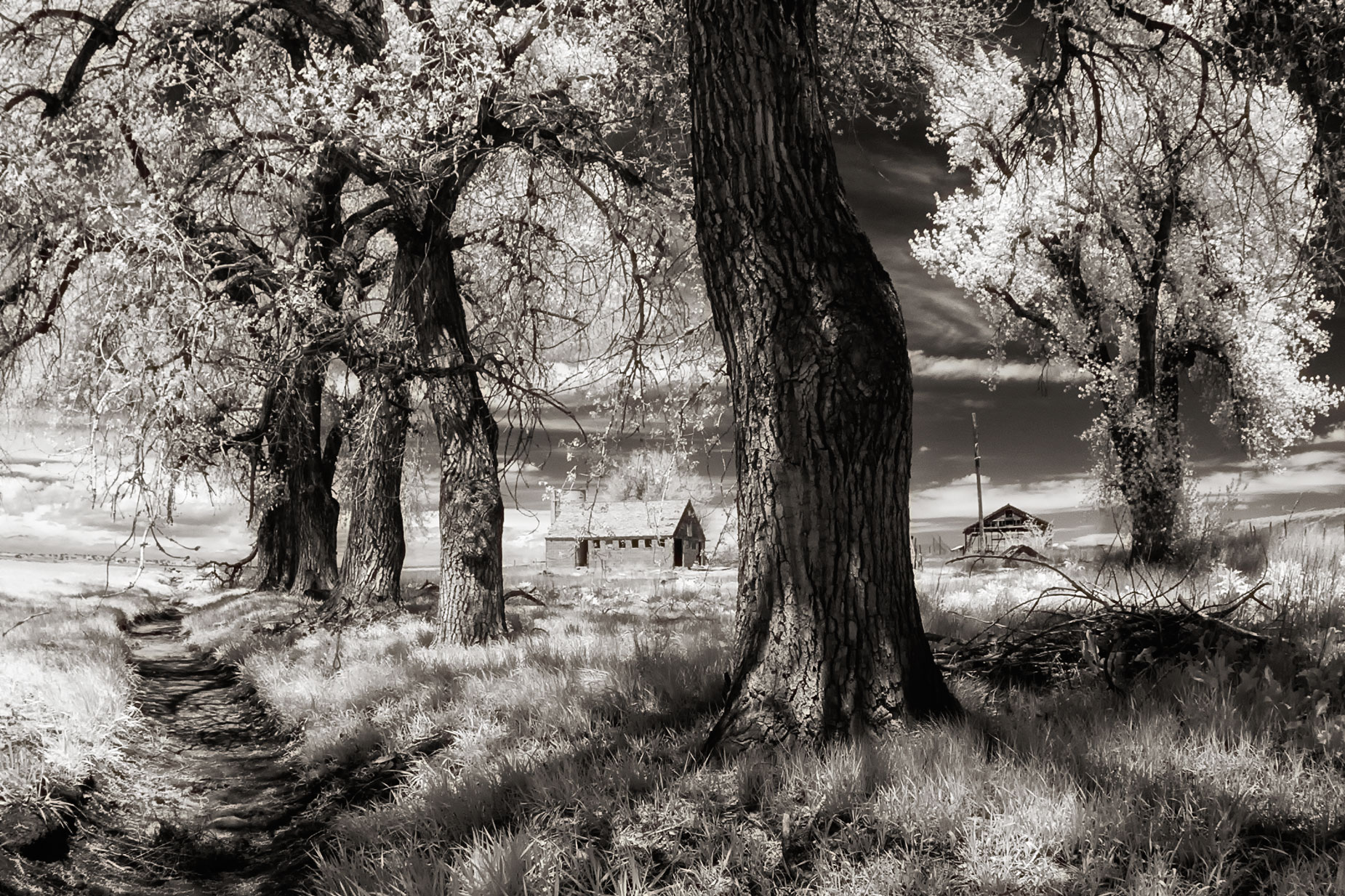#wheelswednesday and #monochromemonday swapped places so I can celebrate International Volkswagen Bus Day on Monday. So today were looking at a monochrome photography, in infrared, no less.
Today’s Post by Joe Farace
“Archaeologists have used aerial photographs to map archaeological sites since the 1920s, while the use of infrared photography started in the 1960s…”—Sarah Parcak
After trying infrared photography using filters, the next tip I suggest to photographers who are interested in trying infrared but might prefer using an IR-converted camera is to convert one of their old cameras that’s sitting around collecting dust. The idea being that if you’re not using it anyway, why not get usage from something that’s probably not worth much anyway. Infrared conversion will undoubtedly add to its value both as a camera and in real-world cash if and when you decide to sell it.
About Filters: Because they’re the least expensive gateway to infrared photography, there are lots of posts on this Blog about using infrared filters. Use this Blog’s Search function (the Magnifying Glass icon above) to search for “filter” and “infrared” to find them.
I’ve always admired photographers who had the financial wherewithal to have the latest high-end cameras converted for infrared allowing them to create the highest possible resolution images, at least until the next model comes along. And more resolution obviously creates better-looking images. In looking at my pal Barry Staver‘s images made with his IR-converted 20.3-megapixel Panasonic Lumix GH5, there is clearly a visible difference compared to those made with any of my older, lower megapixel Lumix IR-converted mirrorless cameras. If, like me, you’re using a megapixel challenged camera, the one way I (try to) get around my resolution anxiety is to shoot in RAW format.
Does Resolution Matter?
You bet it does. The above image was made using my first IR-converted camera, a 3.2-megapixel Canon EOS D30—not a 30D—that was converted to IR capture by a friend. He did a nice job but I had to wait six months for him to finish the job.

How I Made this Photograph: I later sold the Canon EOS D30 that I used to make this image and replaced it with a 6.3-megapixel EOS D60—not a 60D— that was converted by the same guy; same result, great IR, slow delivery. That camera was replaced with an EOS Digital Rebel Xti and was the first camera I had converted by LifePixel, which in turn was replaced by a 50D that they also converted, both of which I still shot in RAW to squeeze the most quality out of the file. After I sold the 50D, it was replaced —albeit not all at once—by three different Panasonic Lumix models with each camera having a different IR filter installed, all by LifePixel.
The lens that I used for the above shot was unrecorded in the EXIF data because it was probably manual focus and the camera was old. How old was it? The Canon EOS D30 was initially announced by Canon on May 17, 2000 and although I didn’t get one right away, I did purchase it used it within a year of introduction. If I had to guess what lens was used, it might be a Zenitar 16mm f/2.8—there’s some obvious horizon line curvature—that I picked up on eBay for around one hundred bucks. Exposure was 1/250 sec at f/16 and ISO 400.
The RAW file was opened and lightly tweaked in Adobe Camera RAW, lightly tweaked in Photoshop CS6 before being converted to monochrome with Silver Efex with Color Efex’s Glamour Glow filter used to add some glow effects with the Glow Warmth slider kicked up to provide some woody warmth.
 Life Pixel does a great job with IR conversions and they have done most the conversions for my Canon DSLRs and all my Panasonic Lumix cameras. This is not a paid or sponsored endorsement, just my experience.
Life Pixel does a great job with IR conversions and they have done most the conversions for my Canon DSLRs and all my Panasonic Lumix cameras. This is not a paid or sponsored endorsement, just my experience.
New copies of my book, The Complete Guide to Digital Infrared Photography are available from Amazon for $43 while used copies start at $13.85 as I write this. My book Creative Digital Monochrome Effects has a chapter on IR photography and is available new from Amazon for $19.03 with used copies starting around four bucks